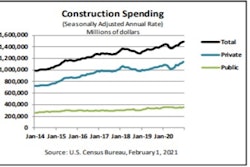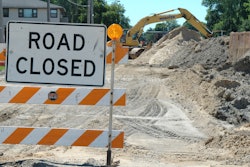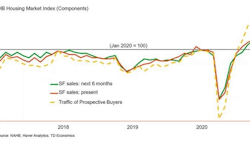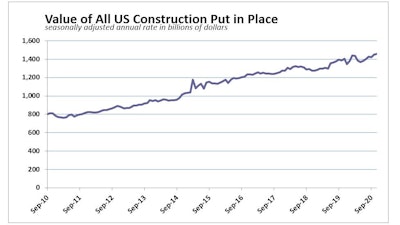
U.S. Commerce Department data from November measured the value of total U.S. construction put in place rising 0.9% to a seasonally adjusted annualized rate of $1.459 trillion, the highest level since the government started tracking the series in 2002. The number was lifted by residential construction spending that soared on a 5.1% leap in single-family housing construction, as nonresidential construction spending fell 0.6%.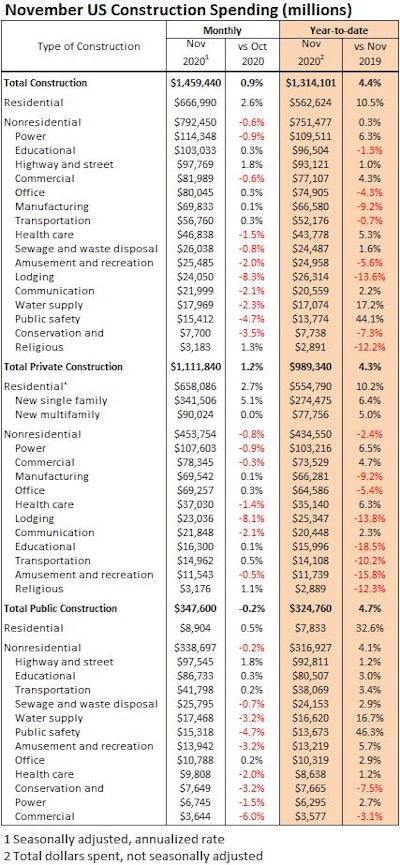 Ten of the sixteen nonresidential construction subcategories saw decreased spending in November, with notable drops in the power construction, commercial and an 8.7% plunge in lodging construction.
Ten of the sixteen nonresidential construction subcategories saw decreased spending in November, with notable drops in the power construction, commercial and an 8.7% plunge in lodging construction.
“Private nonresidential construction declined for the fifth-straight month in November, while public nonresidential spending slipped for the fifth time in the past six months,” said Ken Simonson, the association’s chief economist. “Unfortunately, our latest survey finds contractors expect the volume of projects available to bid on in 2021 will be even more meager.”
Meanest nonresidential hits
On a seasonally adjusted annualized basis, nonresidential construction spending totaled $792.5 billion, down 0.6%, for the month. Ten of the sixteen nonresidential subcategories saw decreased spending, with notable drops in the power construction (currently the largest subcategory), commercial construction and an 8.7% plunge in lodging construction.
Through the first 11 months of 2020, spending on lodging construction is down 13.6%. Much larger categories have shown dramatic drops, such as manufacturing’s 9.2% plummet, office down 4.3% and educational construction down 4.3%.
Private nonresidential spending fell 0.8% in November, and is down 2.4% year-to-date. Public nonresidential spending fell 0.2% for the month, and has grown 4.7% year-to-date compared to the first 11 months of 2019.
“Typically, spending patterns in nonresidential construction lag behind those of the overall economy by 12 to 18 months,” said Associated Builders and Contractors Chief Economist Anirban Basu. “But the pandemic-induced downturn of 2020 was so abrupt and created such massive issues for developers, state and local governments, and others who purchase construction services that the impact on nonresidential construction was virtually immediate.
“The single hardest-hit segment of the industry is lodging. While leisure travel is likely to rebound as more Americans are vaccinated, business travel may take years to recover. This bodes poorly for the construction of hotels with elaborate meeting spaces located in central business districts or close to airports.
“The near-term nonresidential construction spending outlook is generally not positive,” said Basu. “While there will be certain construction segments that remain active, including data centers, fulfillment centers and certain healthcare facilities, commercial construction is positioned to be weak for the next several quarters. This is reflected in ABC’s Construction Backlog Indicator, which in November reached its lowest level since the beginning of 2011.
“Many public segments have also experienced declines in spending in recent months. The good news is that public construction may receive a substantial boost from post-inauguration stimulus. Infrastructure investment often produces additional opportunities for profitable private development. Suburban commercial developers may also take heart in America’s ongoing residential construction boom, with residential construction spending up more than 16% on a year-over-year basis, as interest in homeownership surges.”
Sources of housing strength
Monthly residential-spending gains are largely attributed to the strong growth of spending on single-family and improvements. Single-family construction spending rose to a $341.5 billion annual pace in November, up by 5.1%. This is in line with the strong readings of single-family housing starts and solid builder confidence. Remodeling spending inched up by 0.2% in November. Meanwhile, multifamily construction spending stayed flat after reaching a record high in October, and was 15.8% higher since a year ago.





